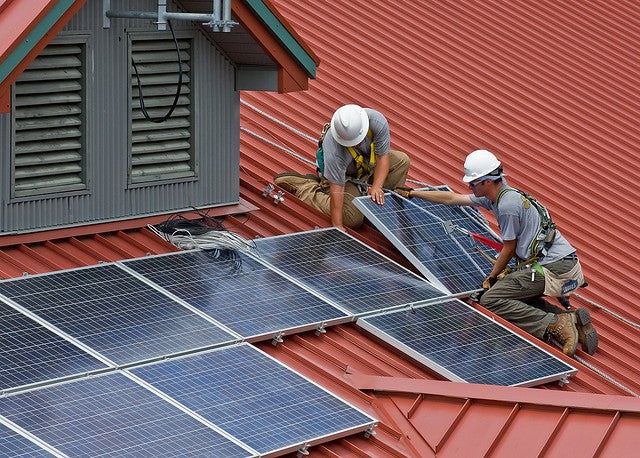Up to now, the most popular and cost effective forms of financing solar projects have been leases and Power Purchase Agreements (‘PPAs’), which allow homeowners to install solar photovoltaic (PV) systems on their property and purchase power from the system’s output via a financial arrangement with a third-party developer who owns, operates, and maintains the solar panels.
Unfortunately, these creative financing mechanisms have not generally been available for commercial property owners. The only exceptions were buildings owned (or leased for a very long time) by investment-grade entities such as Google, Walmart, or a state or local government. Most small or medium businesses, office buildings, shopping centers, and apartment buildings could not access financing for money-saving solar projects as investors have been wary of extending 20-year solar financings for most commercial properties.
Fortunately, our good friends at Connecticut’s Green Bank (CEFIA) have created the first solar leasing investment fund that uses Property Assessed Clean Energy (PACE) to provide investors assurance that they will be repaid. The ‘CEFIA structure’ allows commercial property owners to sign a lease or PPA in the same manner and terms as their investment-grade brethren. The only difference is that payments are linked to the property tax bill and survive foreclosures. Since the taxman almost always gets paid, this structure allows investors to consider a much wider range of commercial credits.
According to Bert Hunter, CIO of CEFIA, “Our tax equity partner has provided us with underwriting guidelines that permit PPAs and solar leases secured through PACE, allowing solar developers to propose projects that would not generally be considered for financing. We have seen tremendous interest from developers, have created a $10 million pipeline, and expect to close our first transaction in May.”
Unfortunately, California’s PACE rules do not currently allow for the CEFIA structure to be implemented, but EDF is working on two potential solutions to this problem. First, we are in discussions with Demeter Power Group, Clean Fund and a couple of leading solar developers on an innovative solution that is expected to be effective under current PACE program rules.
“Our PACE solution is available in California today,” according to Michael Wallander, President of Demeter, “and we are in advanced talks with investors and project developers about executing our first transactions in the state.”
Second, Renewable Funding and EDF are working with Assemblymember Nancy Skinner on her PACE bill (AB 1883). This bill should be able to clear the way for the somewhat simpler CEFIA structure and further increase solar investment at no cost to taxpayers.
As soon as we have a workable solution in California, EDF plans to replicate it across the country. We look forward to helping provide all commercial properties the opportunity to join the low-cost solar revolution.
This commentary originally appeared on our California Dream 2.0 blog.










